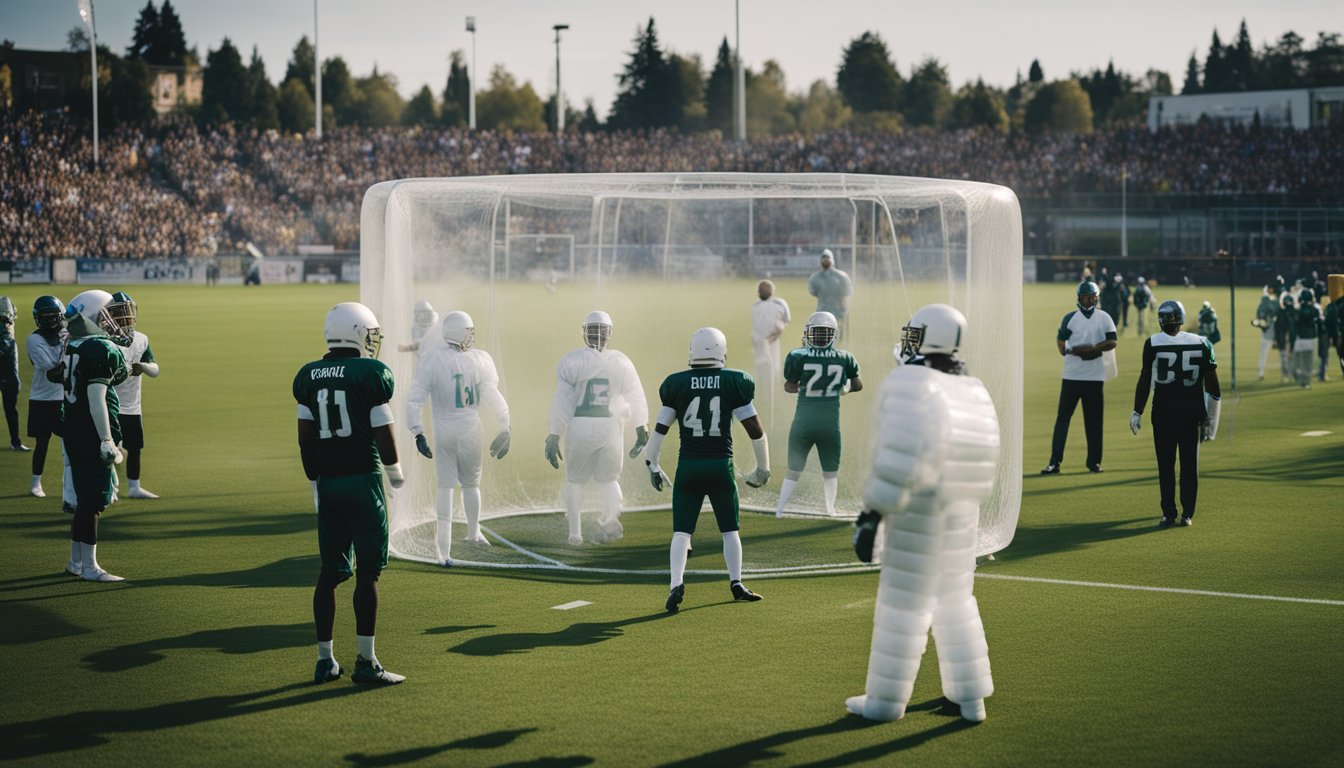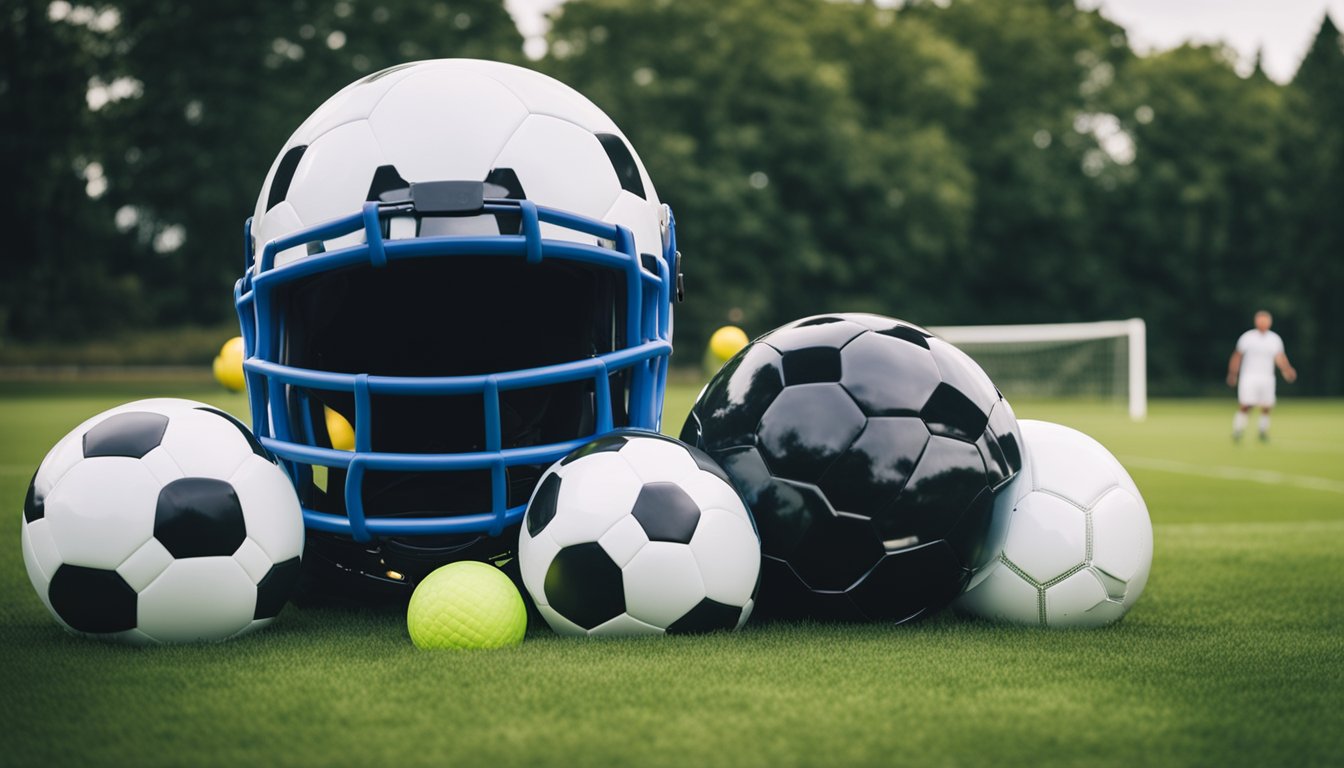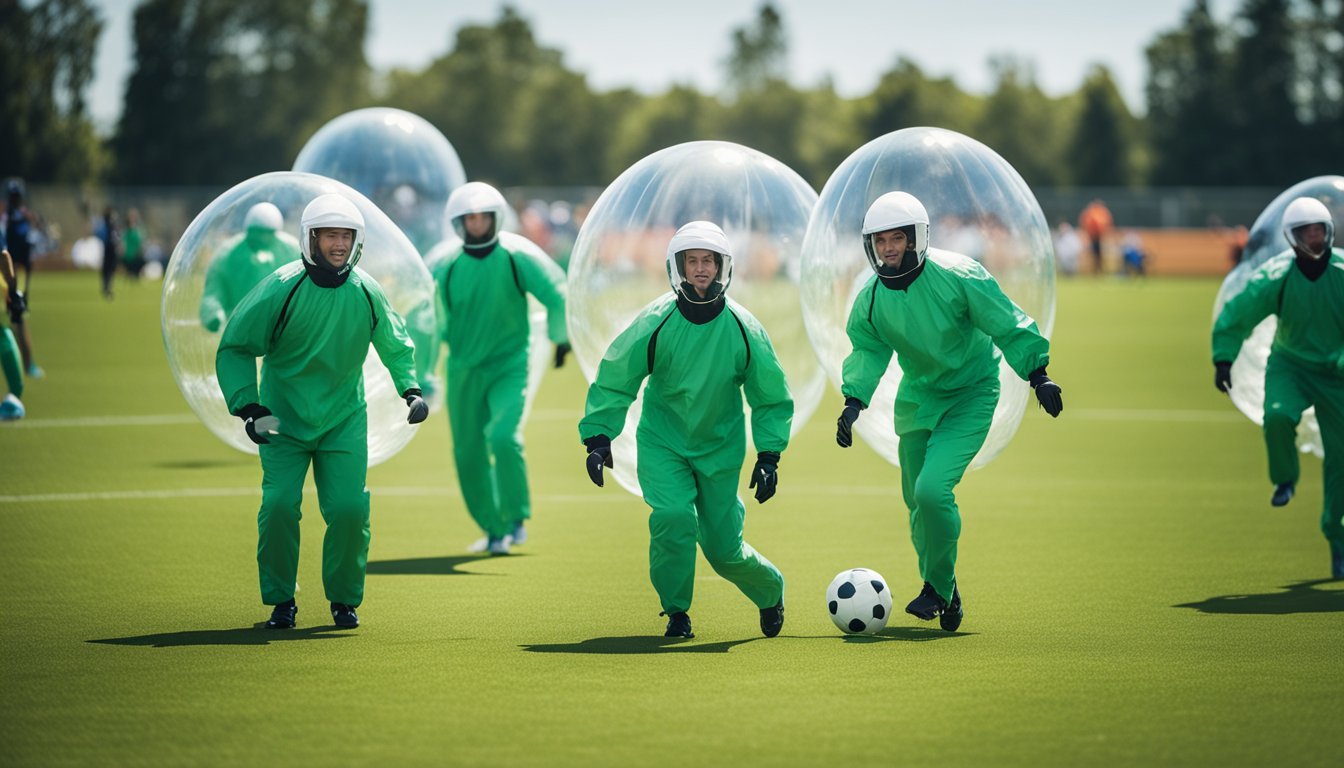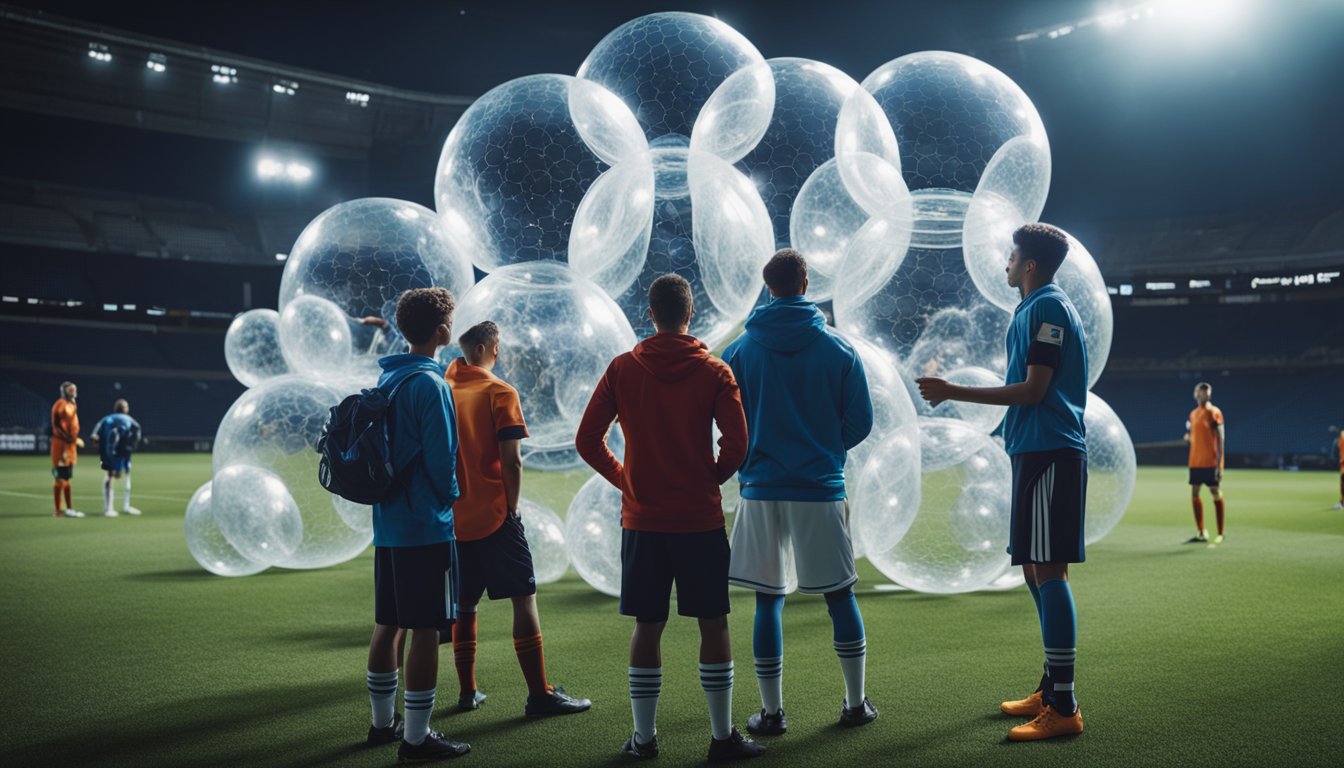Late updated: 25 Feb 2025 12:02
Written by: Emma Saunders
Bubble Football Matchday Essentials for Beginners: Your Ultimate Guide
Stepping onto the pitch for bubble football promises laughter, excitement, and a unique twist on a well-loved game. For beginners, ensuring you're properly prepared can make all the difference between chaos and a fun-filled adventure. Our guide will help you get started by covering essential equipment and the basics needed for your first match.

Navigating the world of bubble football requires just a few key items. First, the bubbles themselves are the most important—your trusty armour that both protects and challenges you. While the suits might look cumbersome, they add an extra layer of hilarity and safety to the game. Additionally, comfortable sports gear is recommended to ensure effortless movement.
Mastering the fundamental rules can elevate your first experience. Knowing where to position yourself and when to engage in playful bumps is often the difference between a great play and a tumble. By combining knowledge with enthusiasm, our aim is to make your introduction to bubble football nothing short of memorable.
Key Takeaways
- Bubble football requires the right equipment for a successful match.
- Understanding the basics helps new players enjoy the game safely.
- Enthusiasm and preparation enhance the overall experience.
Getting Equipped for the Game

Participating in bubble football requires the right gear to ensure both safety and enjoyment. Key items include the bubble suit, which provides ample protection and the proper attire for unrestricted movement.
Understanding the Bubble Suit
The bubble suit, commonly known as a zorb, is the defining piece of equipment in bubble football. It is designed to cover the upper body and head, creating a cushion of air that absorbs impact during play. These inflatable suits allow players to run, bump, and roll without the risk of severe injury.
Safety is our priority when selecting a bubble suit. We ensure it fits snugly without being too tight, allowing freedom of movement while still providing protection. The material is durable, resisting tearing or punctures during games. Weight and height restrictions are important considerations, with most suits accommodating individuals up to a certain size. Proper fit ensures both safety and effective gameplay.
Essential Gear Checklist
In addition to the bubble suit, the right attire enhances both comfort and functionality. Athletic clothing made from breathable fabric offers flexibility and helps manage perspiration during intense matches. Knee pads can add extra protection for those concerned about impacts.
We recommend sturdy footwear, such as trainers, to provide support and improve traction on the playing surface. A secure fit prevents accidents caused by slipping. Keeping hydrated is also crucial, so a water bottle should always be on hand.
This checklist is essential for a successful game, ensuring players stay safe and ready for action. Proper gear choices contribute to a satisfying and enjoyable bubble football experience.
Mastering the Basics and Rules

Navigating a bubble football match involves understanding its unique rules, honing critical skills, and working cohesively as a team. With these essentials in mind, we can enhance the overall experience.
Familiarising with Bubble Football Rules
Bubble football combines traditional football elements with unique aspects. Each match typically features two teams, with five to ten players each. The primary aim is to score by getting the ball into the opposing goal.
Basic rules include no contact with players not in possession of the ball, and tackling from behind is not allowed. Matches often have referees to maintain sportsmanship, issue fouls, and handle substitutions. While borrowing from regular football, bubble football adds its own twist, bringing a dynamic dimension to the game. Understanding penalties and respecting the referee's decisions are crucial in maintaining fair play and enjoying the competitive spirit of this exciting sport.
Developing Essential Skills
Playing bubble football requires agility, balance, and stamina. Maintaining equilibrium inside the zorb is essential to prevent falls and make effective manoeuvres. Agility ensures quick turns and dodges, allowing players to outmanoeuvre opponents. Regular exercise can enhance these skills, making us more effective on the pitch.
Practising ball control will also sharpen our ability to coordinate movements while being encased in a bubble. It’s important to remember that, unlike traditional football, the bubble restricts some movement. Hence, we should focus on using our body's centre of gravity effectively to maintain balance and execute quick direction changes.
Effective Team Communication and Strategy
Communication and strategy are at the heart of successful team dynamics. Clear instructions and feedback during a game help in maintaining team cohesion. Calling for the ball or signalling positions can drastically improve performance.
Strategising involves understanding each player's role and positioning appropriately on the field. Effective positioning helps in guarding our goal and staging successful attacks. Teamwork is also key, as individuals must coordinate moves to outsmart opponents. Developing tactics based on prior experiences or observations, such as organising defensive walls or planning set pieces, can give us the edge against competitors, ensuring we remain organised and competitive throughout the match.
Frequently Asked Questions

We've gathered some key points to help newcomers prepare for their first bubble football experience. Below, we address common queries about what to bring, dress code specifics, weight limitations, game rules, safety measures, and team organisation on the day.
What should participants bring along for a bubble football session?
Players should ensure they have essentials like a water bottle, snacks for energy, and a change of clothes. It's also wise to bring sports shoes with good grip.
How does one dress appropriately for a game of bubble football?
Comfortable athletic wear is recommended. Opt for clothing that allows full range of motion, and avoid items with sharp or protruding elements.
Is there a player weight restriction for participating in bubble football?
Yes, there are general weight restrictions to ensure the safety of all players. Typically, participants should weigh between 45kg and 115kg, but it's always best to check with the provider.
Can you outline the basic rules governing bubble soccer?
Bubble football merges football rules with added fun. Aim to score goals, but physical contact rules are relaxed due to the inflatable suits. Key is having fun while maintaining sportsmanlike behaviour.
Are there any safety guidelines specific to bubble football to be aware of?
Safety is paramount. Players should always secure the harness inside the bubble suit and check the condition of equipment before playing. A proper warm-up can help prevent injuries.
How is a team organised in zorb football, and what positions do players hold?
Teams are usually smaller than in traditional football, often 5-a-side. There are no fixed positions, but players may take turns as striker or defender, allowing everyone to experience different roles on the pitch.
